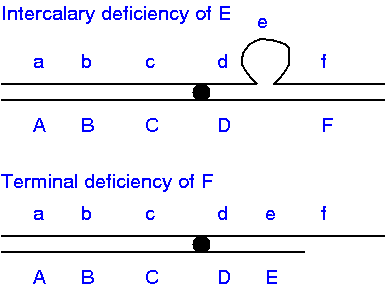Deletion Or Deficiency
Deletion Or Deficiency Assignment Help | Deletion Or Deficiency Homework Help
Deletion or Deficiency
A deficiency involves loss of a chromosome section. If a break takes place on a chromosome, the part without the centromere is lost, while the part with the centromere functions as a deficient chromosome. Bridges first observed a deficiency in the Bar locus of Drosophila.Deletions are two types, terminal and interstitial. If a single break occurs near the end of a chromosome, it results in a terminal deletion. Such deletions have been described in the maize, but are relatively rare. More common are interstitial or intercalary deletions. These result from breaks in the chromosome, followed by reunion of the broken ends. The part between the breaks is eliminated. Deletions can be detected during paring of homologous chromosomes. Paring takes place chromomere. If a section missing from the chromosome, then the homologous chromosome containing this section bulges out during pairing.

Genetic effects. If a segment of a chromosome is missing, then the genes present in that section are absent. If the missing genes are of physiological importance, the organism will not survive. Another effect of a deficiency is that it allows recessive genes to express themselves phenotypically. If a dominant gene A is paired with a recessive gene a, then the dominant gene expresses itself phenotypically. If, however, the dominant gene A is lost in a deletion, then the recessive gene a will express itself. This expression of a recessive trait is called pseudo dominance.
For more help in Deletion or Deficiency please click the button below to submit your homework assignment.